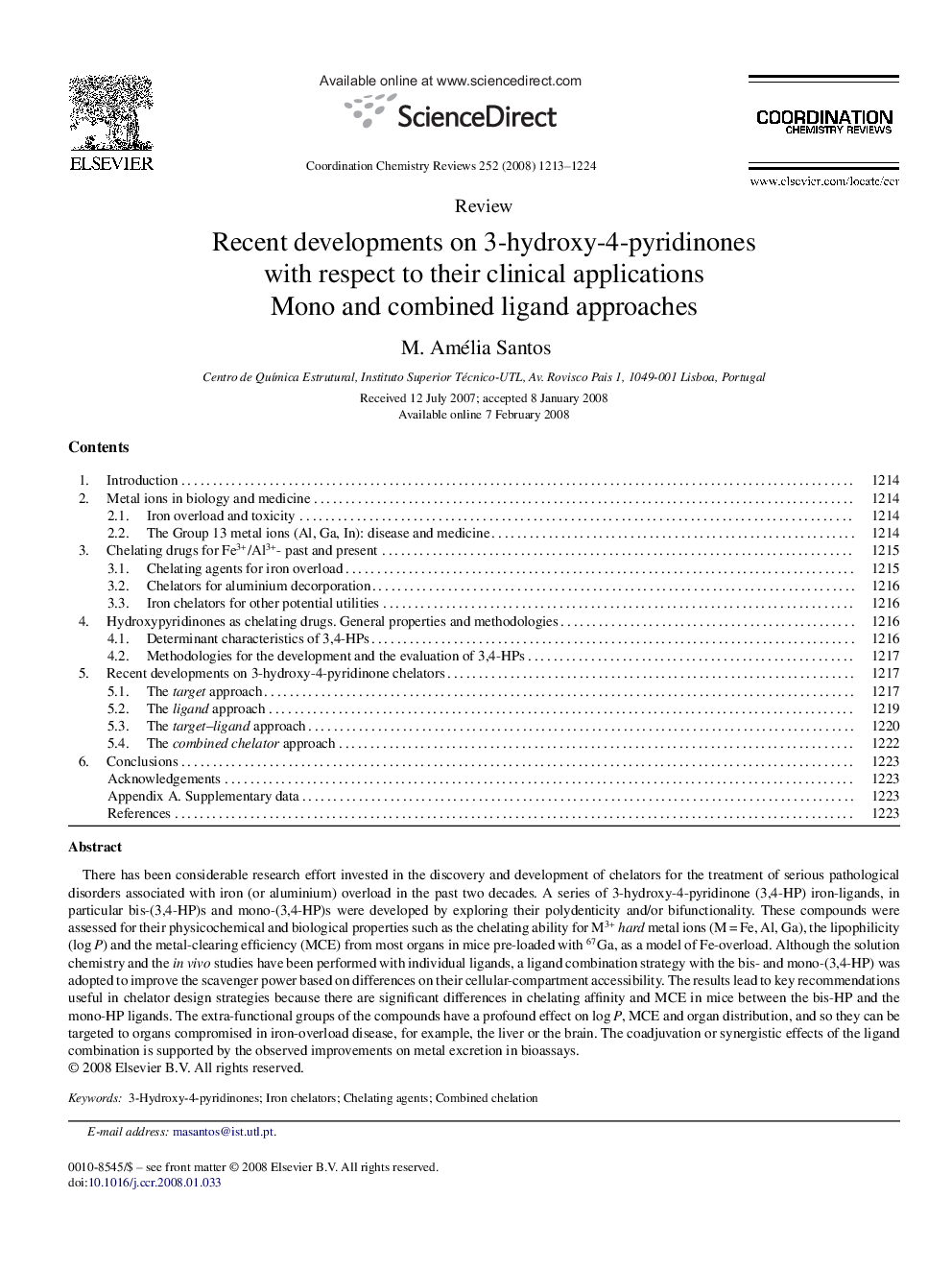| کد مقاله | کد نشریه | سال انتشار | مقاله انگلیسی | نسخه تمام متن |
|---|---|---|---|---|
| 1301278 | 1498817 | 2008 | 12 صفحه PDF | دانلود رایگان |

There has been considerable research effort invested in the discovery and development of chelators for the treatment of serious pathological disorders associated with iron (or aluminium) overload in the past two decades. A series of 3-hydroxy-4-pyridinone (3,4-HP) iron-ligands, in particular bis-(3,4-HP)s and mono-(3,4-HP)s were developed by exploring their polydenticity and/or bifunctionality. These compounds were assessed for their physicochemical and biological properties such as the chelating ability for M3+hard metal ions (M = Fe, Al, Ga), the lipophilicity (log P) and the metal-clearing efficiency (MCE) from most organs in mice pre-loaded with 67Ga, as a model of Fe-overload. Although the solution chemistry and the in vivo studies have been performed with individual ligands, a ligand combination strategy with the bis- and mono-(3,4-HP) was adopted to improve the scavenger power based on differences on their cellular-compartment accessibility. The results lead to key recommendations useful in chelator design strategies because there are significant differences in chelating affinity and MCE in mice between the bis-HP and the mono-HP ligands. The extra-functional groups of the compounds have a profound effect on log P, MCE and organ distribution, and so they can be targeted to organs compromised in iron-overload disease, for example, the liver or the brain. The coadjuvation or synergistic effects of the ligand combination is supported by the observed improvements on metal excretion in bioassays.
Journal: Coordination Chemistry Reviews - Volume 252, Issues 10–11, May 2008, Pages 1213–1224